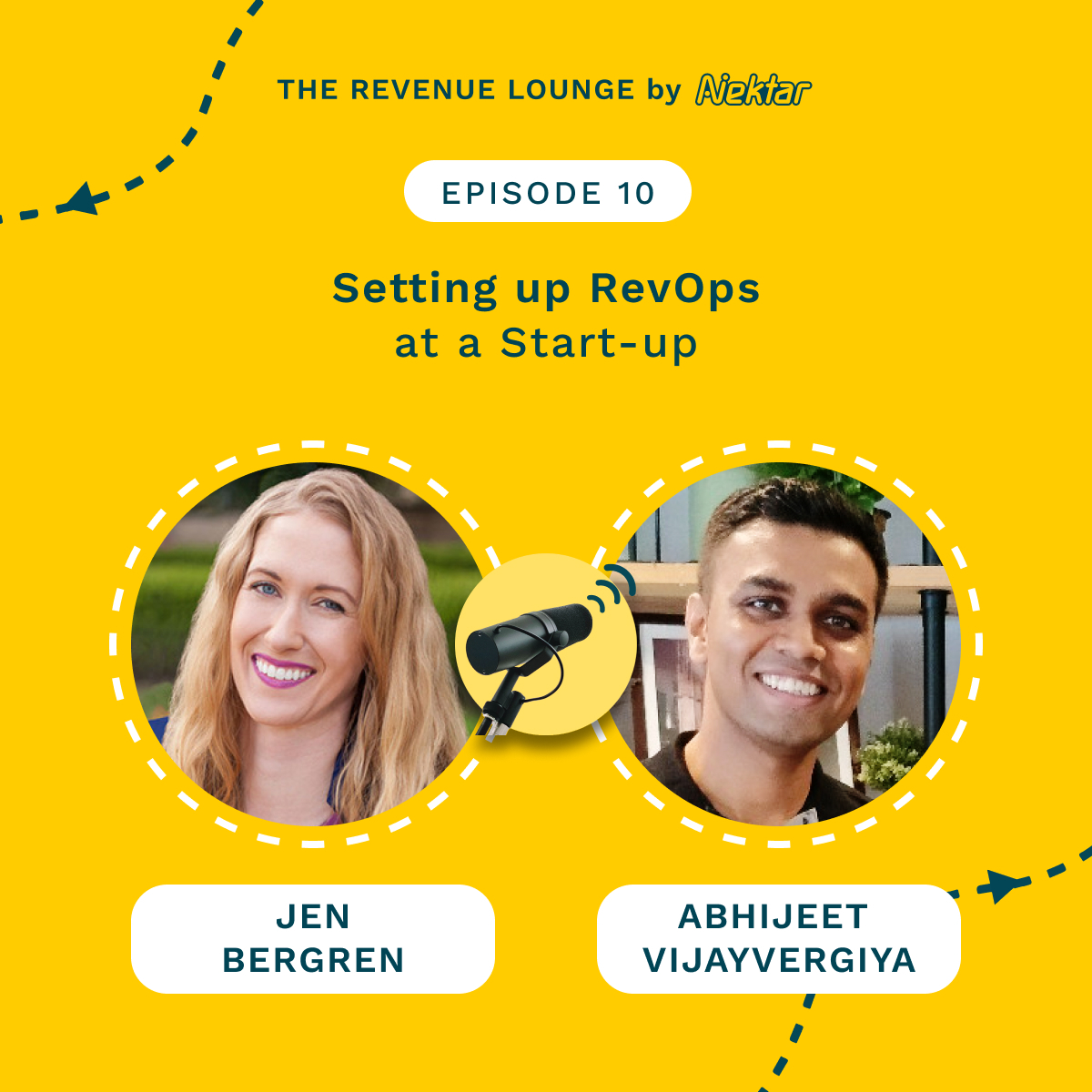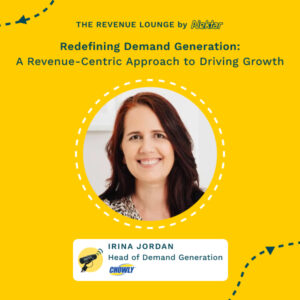Driving Revenue Growth with Strategic RevOps Alignment ft. John Hultman
November 6, 2024
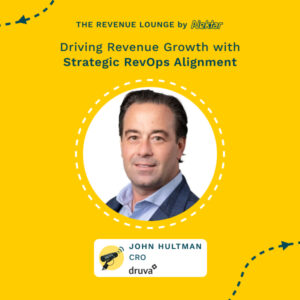
About
The Revenue Lounge
The podcast covers stories from leaders across RevOps, Sales, Customer Success, GTM, Data and Marketing about what drives these functions and what advice they would share with our listeners. With 3 seasons recorded, the podcast currently features 50+ enterprise leaders in the B2B SaaS domain. Tune in to hear from the best in the business
In this episode of The Revenue Lounge, host Randy Likas interviews John Holtman, Chief Revenue Officer at Druva, a cloud data protection and security company. They discuss strategies for aligning go-to-market functions like sales, marketing and customer success to drive revenue growth. Key topics include: breaking down silos between teams, establishing unified metrics and KPIs, leveraging data and insights, managing organizational change, and adapting strategies in a shifting market.
Main Discussion Points:
– Challenges of misaligned metrics and “siloed” thinking between go-to-market teams- Establishing KPIs aligned to overarching revenue goals- Using data and analytics to identify friction points impacting revenue- Expanding accounts through customer success and renewals motions- Managing change to unify teams under one strategy- Adapting go-to-market in a shifting market post-COVID
Guest Bio: John Holtman
– Chief Revenue Officer at Druva- 20+ years experience in tech sales leadership roles- Previously: SVP North America Sales at Cohesity, VP Enterprise Sales at Dell
Company Bio:
Druva – Cloud data protection and security SaaS company founded in 2008, headquartered in Sunnyvale, California. Offers data backup, disaster recovery, archiving and analytics solutions.
Key Quotes:
“Revenue growth is no longer just about hitting sales targets. It’s about creating a seamless alignment across all revenue facing teams.” (00:00:09)
“The key to this alignment is a well executed RevOps and go to market approach that not only breaks down silos, but also enhances visibility, coordination, and data driven decision making across the organization.” (00:00:18)
“Everybody has a tendency to have their own set of KPIs that they’re managed to…You have to set very meaningful, thoughtful metrics that ultimately impact the end goal all along the way.” (00:03:33)

Randy Likas (00:03.276)
Revenue growth is no longer just about hitting sales targets. It’s about creating a seamless alignment across all revenue facing teams, sales, marketing, and customer success, all under a unified strategy. The key to this alignment is a well-executed rev ops and go-to-market approach that not only breaks down silos, but also enhances visibility, coordination, and data-driven decision-making across the organization. Hello, everyone. Welcome to another episode of the Revenue Lounge. I am your…
host, Randy Likass. And in today’s episode, we will explore how aligning your rev-up strategy can drive revenue growth. We’ll dive into the challenges of unifying different engagement metrics, the role of data in ensuring team alignment, and the tools that can help optimize the process. Joining me today is John Hultman. John is the Chief Revenue Officer at Druva. John has spent his entire career in technology sales and sales leadership positions. Prior to joining Druva, John spent 18 months at Cohesity, where he acted as the Senior Vice President of North American Sales and Head of Global Channels. He was accountable for go-to-market strategy, growth, and worldwide pipeline generation. And previous to that, he spent almost 19 years at Dell in various sales and sales leadership roles. John, thanks so much for joining us today.
John Hultman (01:20.386)
Thanks for having me.
Randy Likas (01:22.104)
So John, I usually like to start these. Maybe just tell us a little bit about you, your current role at Druva, and for those who might not know much about the company, maybe just a little bit in terms of what Druva does.
John Hultman (01:34.422)
Yeah, so I’m the Chief Revenue Officer here at Druva. I’ve been here approaching a year. We’re a cloud data protection data security company, a highly competitive segment of the market. We’re 100 % SaaS based, so we differentiate in that respect to many of our peers.
Randy Likas (01:53.954)
So what made you take the job, John, a year ago? Like, kind of what got you excited about the position?
John Hultman (02:01.048)
Well, I’ve always wanted to be a CRO, so that was obviously one of the aspects of it. The second one was having broader responsibility and accountability for the overall business rather than just running a sales function was certainly of interest. I’ve done that in prior roles, and that’s what kind of gets me motivated and inspired.
Randy Likas (02:21.538)
Yeah, so we talked about in sort of the intro of the different go-to-market functions, Customer success, sales, marketing, all rolling into CRO. Do you have oversight in all those roles?
John Hultman (02:32.44)
Not marketing, but everything else.
Randy Likas (02:34.734)
Okay, great. And sort of what’s been like, just out curiosity, like what’s been the biggest surprise over the past year taking the role? Anything that you’d like to share or interesting?
John Hultman (02:46.864)
Well, I just need more hours in the day. I mean, there’s just a lot of things that you get pulled into day to day and you have to just really learn how to delegate and use your time very judiciously or the day just gets away from you and you just burn yourself out. So time management has probably been the biggest thing that I’ve had to work on.
Randy Likas (03:04.238)
Yeah. Are you guys all remote or do you have, I know you have an office in the Bay Area, but your sale seems all across the US? Cool. Yeah.
John Hultman (03:13.24)
Globally, yeah. So we’ve got probably two-thirds of our sellers that are in territory in the United States and then in the major markets in Europe and Asia as well.
Randy Likas (03:24.588)
Gotcha. And about how big is your team globally?
John Hultman (03:27.48)
We bought 170 sellers globally.
Randy Likas (03:30.318)
Great, fantastic. So John, let’s talk a little bit about some of these silos that exist between different go-to-market functions that I think ultimately, under your leadership, you’re trying to break some of those things down, create a cohesive strategy. But I guess when you think about the different functions,
Typically, what are some of the traps, I guess, that make those functions siloed? And then how do you bring them all together under one strategy?
John Hultman (04:01.302)
Yeah, I guess one of the examples I thought about was, know, everybody has a tendency to have their own set of KPIs that they’re managed to. I’ll use like the SDR function as an example. Everybody kind of looks at their metrics kind of vertically, right? I’m green, I’m green, I’m green, but you’re not getting to the outcome that you want.
And so what I found really helpful is to kind of work backwards from the answer and kind of flip things horizontally and look at where the breaks are, where the friction points are, and then you can kind of point to where the problem is to solve that. Ultimately, the outcome is what matters, and sometimes you can have everybody cheering success in their vertical pillar, but you’re not getting to where you want to go.
Randy Likas (04:49.132)
Yeah, it doesn’t make sense if marketing is saying, hey, I hit my my pipeline gen goal, but we missed revenue goals. Right. Like, yeah. Yeah. So so I guess in thinking about that and trying to align those metrics. Right. What are some of the things that you that you look for? Is it around pipeline and revenue? Like if you think about the KPIs or the OKRs of your direct reports, how do you bring that all together under one strategy?
John Hultman (04:57.942)
Yeah.
John Hultman (05:15.286)
Yeah.
Well, I’ll just use that example as one, right? Ultimately, what we care about is marketing-generated bookings, right? And the quantity of the pipeline is one thing, but there’s also other key metrics that impact that because you can have a whole lot of quantity, but if you don’t have quality, you’re not going to get to the overall bookings number. So you have to kind of set very meaningful, thoughtful metrics that ultimately impact the end goal all along the way.
And that really will highlight, I think, where you have problems and where you have disconnects in the system.
Randy Likas (05:55.392)
And so when you do that and you align those, what are some of the friction points you hear from the different functions, if you do?
John Hultman (06:06.528)
Yeah, I mean, the standard one is you hear, don’t have enough leads. The quality of the leads are good. And so, you know, we have scoring mechanisms that we use to kind of determine the validity and quality of the leads. We look at things like how long did it take for the AE to follow up? What are some of the reasons for disengagement when leads drop off or they don’t, you know, continue to move through the pipeline? We look at how long are
opportunities at each stage along the way and we look for patterns and we look for common issues that we can solve for that are overly unique I guess.
Randy Likas (06:49.464)
You know, I’m in Vegas right now for a big customer conference for one of the sales tech vendors and
This plus I was talking with someone last week who hosted a roundtable of CROs at B2B MX and interesting data point that they point out of those CROs in the roundtable, said that 30 to net new meetings, first meetings are down 30 to 50 % year over year. So it’s just a hard market right now to get people’s Don’t know if that’s the case for you all, Drew or not, but we’d love to just sort of,
John Hultman (06:58.456)
Thank you.
John Hultman (07:12.44)
Thank
Randy Likas (07:27.984)
looking at this market and the challenge, I think, in generating those first appointments. What are your thoughts? Are you guys seeing that? And what do you think some of the reasons are?
John Hultman (07:38.561)
It’s really hard. mean, think prospects are inundated with attempts to get their attention, whether it’s LinkedIn, cell phone calls.
emails, DMs, and eventually it just becomes noise to them. I don’t even answer my phone anymore unless I know it’s like a recognized number. And so it is getting harder. It’s taking more attempts to get quality meetings set up. We are able to grow our meetings, but it takes a lot more work to do it. And at a certain point, you got to start looking at what is my overall cap on acquiring these customers, right?
Randy Likas (08:10.838)
Yeah.
Randy Likas (08:19.181)
Yeah.
John Hultman (08:19.834)
your different routes to market and say, know, are there more effective, more cost efficient ways to gain access to the customers than, you know, a traditional MQL marketing generated lead system because there’s a lot that goes into that, right? It’s not only the SDRs, it’s all the tools and data cleansing and all the other ancillary things that add real cost that ultimately impact that customer acquisition cost.
So we spent a lot of time looking at that versus like our OEM relationship with Dell, our channel go-to-market motion, our MSP motion. They all have different kind of pros and cons and different cost implications.
Randy Likas (09:03.362)
Yeah. You know, as a a.
data security platform, I’m sure that your sales are pretty complex. You’ve got multiple stakeholders that are involved in the decision, probably fairly long sales cycles to get the different folks aligned. There’s a big trend right now that Forrester talks quite a bit about, and lot of other people are leaning in right now around this idea of moving away as MQL, as a single buyer, to now looking at buying groups and looking for the
signals across multiple buyers that can identify that maybe something is heating up at the company. What’s your perspective on that? Is that kind of what you guys are seeing as well?
John Hultman (09:42.551)
Yeah.
John Hultman (09:47.468)
Yeah, mean, so we use, there’s a lot of different ABM platforms out there. I’ve used Sixth Sense in the past, good platform. We’re using Zoom Info right now. It’s proving to be.
pretty good platform for the cost, value that it delivers. And I think you’re right, the buying groups are globally distributed in many cases. People are all over. We found it not only to be very useful around targeting the right people at the right time, which obviously drives better efficiency, but also to understand signals of what may be going on in your existing customers. And looking at as
Randy Likas (10:08.334)
Yeah.
Randy Likas (10:25.932)
Yep.
Randy Likas (10:32.269)
Yep.
John Hultman (10:33.644)
potential forewarning of a churn that’s coming up. And so we’re finding a lot of use in the platform. It’s early days, but we’re moving forward with it aggressively.
Randy Likas (10:44.226)
Yeah, just to build on that point.
you know, I’ll give credit where credit’s due, right? So I’m at the Sixth Sense Conference right now and there were some new research that came out that they talked about and they said that, you know, on average there’s about 11 buying committee members, right? So it depends on the company, but, and only one person shows up on an opportunity. You look at Salesforce and there’s one person. We know there’s more people involved, but all those people that kind of come in and out of the deal at different cycles and sort of different personas that are involved in that don’t show up.
And so there’s a lot of, to your earlier point, a lot of existing signals that exist within the sales and customer success conversations that we’re having, especially as we think about expansion, right? As we want to go reach out to new stakeholders that maybe weren’t involved in the initial land, right? But we’ve got to get those new people on board. A lot of signals that exist in those existing conversations. So we’ll just be curious to like, when you think about your expansion motion,
and more specifically, I guess I’m asking about customer success. What do you look for as far as expansion strategy, new stakeholders need to get aligned? Is that the customer success manager that sort of owns that? Do they work in partnership with the AE? How does that work?
John Hultman (12:04.024)
Yeah, we’ve got a little bit of a unique go-to-market from my experience. And at first, I was a little unsure about it when I got here. But I think having almost a year in the model, I’m becoming a believer. I’ll use our mid-market segment as an example. We have dedicated hunting teams, and we have dedicated farming teams, for lack of a better term. Hunting teams, self-explanatory, their job is to go out and get that new logo, as they keep them through the first renewal, then they transition to the expensive.
The expansion team’s job is to build on what was sold initially because generally we’ll acquire a customer for one or two workloads, but we’ve got a dozen workloads plus security plus all these other things that we can obviously sell to these customers and it’s really the job of the expansion team working with the CSM potentially a TAM or SE the partner to all surround that customer and drive as broad of adoption and consumption of all the workloads that it through offers.
with those customers wherever possible.
Randy Likas (13:07.682)
soon.
So a lot of times what we’ll see, again, I’m going to just sort of pressure test this against what you’re seeing, is lots of people are involved in the initial sale, a deal gets landed, right? We start implementing, know, delivering to the customer. But all those people that were sort of decision makers or influencers in that process go away, and now they’re sort of an admin of the tool that our teams work with, you know, bi-weekly or whatever that cadence is that they manage. Yet when we look at renewing that contract,
John Hultman (13:35.544)
Thank
Randy Likas (13:38.448)
or expanding that contract, it’s difficult to get those other stakeholders back engaged, right? They’re not involved in that we’ve located. So curious just from your perspective, like what’s some areas as far as delivering value to keep influential important stakeholders that maybe were involved earlier or that you need to get to in order to expand?
John Hultman (14:01.526)
Yeah, I’d say couple things. One, our marketing team, I think, does a pretty good job of continuing to keep them informed through digital means, social means, things like that. They may not show up to an event. They may not get on a webinar. But hopefully passively, they’re consuming the information and understanding what’s going on with Ruva, even if they’re not engaged, from our perspective. And then secondly, it’s the AEs job, especially in our strategic segment.
is to kind of build out a robust account plan, understand who all the key stakeholders are, make sure that they’re touching those key decision makers on a regular basis because they may have disengaged, but they may become re-engaged when another workload comes up that they have a vested interest in. So I think it’s kind of strategic account planning 101, but it’s a limited time in the day and it’s probably something that everybody can do better at.
Randy Likas (14:52.716)
me.
Randy Likas (14:58.99)
Yeah, well, I mean, look, you and I both grew up in, you know, as sellers and we, AEs, sellers, tend to focus on the, you know, the top accounts. We see the most potential and we, the others, you know, just based on opportunity may not touch. So, I completely agree. Like, like it starts with strategic account planning. It starts with kind of mapping out our potential.
Curious though, what’s the operating rhythm in order to measure that? How do we know how successful? Is it you’re generating opportunities and closing revenue or is it more sort of of the lag? Are you looking at the lagging indicators leading to those things to help make sure that we’re actually making progress within those strategic accounts?
John Hultman (15:41.324)
Yeah, mean, think the real thing we look at is their consumption behavior, right? Are they continuing to consume and grow the footprint in the workloads they have? Are they expanding to additional workloads?
We have propensity models that we use, kind of AI propensity models that take into consideration, don’t know, 100 plus metrics that look at the overall health and propensity of the customer to either churn or expand. So we look at that. And then we do, you know, a customer NPS as well to understand, you know, from them directly, how are we doing as it relates to your overall engagement. We have quarterly QBRs with our large customers, biannual QBRs with our
Randy Likas (16:04.952)
Yeah.
John Hultman (16:22.906)
kind of our mid-com type customers, mid-market type customers. And so we try to do our best to stay engaged with them as much as possible and in all possible ways that we can.
Randy Likas (16:33.858)
Yeah. I want to just turn a little bit the conversation to data and talk about data.
I think in most organizations, there’s no shortage of data and data sprawl sort of happens across many different systems. But as we think about trying to bring together a cohesive, you know, go to market strategy across functions, what’s the sort of what are the different metrics that you look for in the data, I guess, that may live in other systems? And I guess how do you bring it all together to help inform some of that strategy?
John Hultman (17:11.094)
What are the key metrics that we look at to understand the health of the business?
Randy Likas (17:17.198)
Well, yeah, so like data lives in data lives in many different systems, right? You’ve got you’ve got Salesforce, you’ve got whatever sales tech solutions that you might be dealing with. Customer success might have Gainsight, right? But yet we’re trying we’re trying to deliver around a you know, set of set of metrics across all functions. So we’re not operating in silos any longer. So how do you sort of bring it together?
John Hultman (17:20.375)
Yeah.
John Hultman (17:27.682)
Yeah.
John Hultman (17:36.087)
together.
I wouldn’t say that we’ve got it all figured out. So Salesforce is kind of like our customer source of record that everything kind of gets pulled out of. It’s kind of the core CRM system. We use tools like Sigma, which is probably the closest thing that we use to kind of be an aggregator of all of the other data sources. We use Clary. We use tools like Atrium.
Randy Likas (18:00.312)
Mm-hmm.
John Hultman (18:05.408)
Some of them are more open than others and expose APIs where you can kind of aggregate data in certain layers. Some of them don’t. So we try to do our best to kind of aggregate as much as we can and really simplify things because to your point, there’s so much data out there right now and there’s so many different ways to cut it. I have found both at Druva as well as in my prior company, because it’s so readily available and exposed to the sellers and the managers and all that, you get into these arguments.
that’s about what the facts around the data are. And it could be just like the smallest variable that’s different. And they’re arguing about something and they’re both right. They’re just looking at it differently. So it’s not only about bringing it together and simplifying it, but also standardizing on like, is the source of truth that we’re going to look at for this and which dashboard specifically are we going to use to do that. And then kind of locking things down and getting everybody focused on that. Otherwise you spend a lot of time just
just treading water and spinning, arguing about what the facts are.
Randy Likas (19:10.83)
Yeah, so ultimately I think RevOps is probably the team that needs to bring all that data together for you to lead the business. But it’s more than just data, Like data is data. I’m kind of leading the question here a little bit, but.
you’re probably looking for insights in the business. You want your rev ops team to sort of see around corners a little bit. so talk to me a little bit about that if you would. Like how do you hold your team accountable for not just bringing you the data, but bringing you insights. And what does that look like, I guess? So what is an insight to you that could help you grow the business?
John Hultman (19:50.326)
Yeah, I mean, I’ll just maybe I’ll use pipeline as a good example. There’s a lot of different ways to look at pipeline. We look at it through.
a couple different lenses. One, we look at the pipeline that’s created in quarter because we know that’s gonna be our fuel for subsequent quarters. We look at our current quarter pipeline coverage, right? And that’s more of an indicator of do we have enough advanced stage pipeline, a total pipeline to get to the number in quarter? And then we look at the next quarter pipeline. So as we’re kind of getting into month two, month three, we start paying a lot more attention to the next quarter pipeline because we wanna enter the next quarter.
with subsequent pipeline and not be in a constant chase mode. And so our revops team, I think, does a really good job of kind of calling out warning signs when we’re seeing it, whether it’s in a specific geo, a specific team, or even a specific individual. And we cut all of those by rub to market, right? It could be, you have a certain amount of your pipeline that you get from channels, some from OEMs, some from maybe a direct model.
Randy Likas (20:46.104)
Yeah.
John Hultman (20:59.994)
And so we want to make sure, number one, in aggregate it’s healthy, but are there certain functions that aren’t living up to their responsibilities in terms of pipeline generation as well.
Randy Likas (21:11.31)
John, this is going to be edited out of our video, but for some reason my computer is telling me my battery is low. And so I think this outlet here at the hotel. So I’m just going to change. I’m just going to plug in here so I don’t lose you. Yeah, I don’t want to lose you here.
John Hultman (21:28.182)
Yeah, you were cutting in and out a little bit as well, but no big deal.
John Hultman (21:37.976)
What hotel are you at?
Randy Likas (21:39.534)
I am at the Bellagio.
John Hultman (21:42.294)
Thanks.
Randy Likas (21:44.142)
So I’m just gonna change directions here for a moment.
Randy Likas (22:01.716)
Alright, should be back now.
Randy Likas (22:15.662)
So we’ll kind get back into the questions here and then Baswati will edit out. So John, curious, as we talked about the different data points that you look for and the insights that you bring from Revops, can you talk a little bit about more on the renewal side of things? So when you think about your existing business and protecting the existing business, what strategies have you kind of put in place to
make sure that you’re seeing ahead of the curve on any risk signals that might exist in the business to sort of protect your revenue.

Ep #1: Navigating the Downturn with a Hyperfocus on Productivity
Listen Now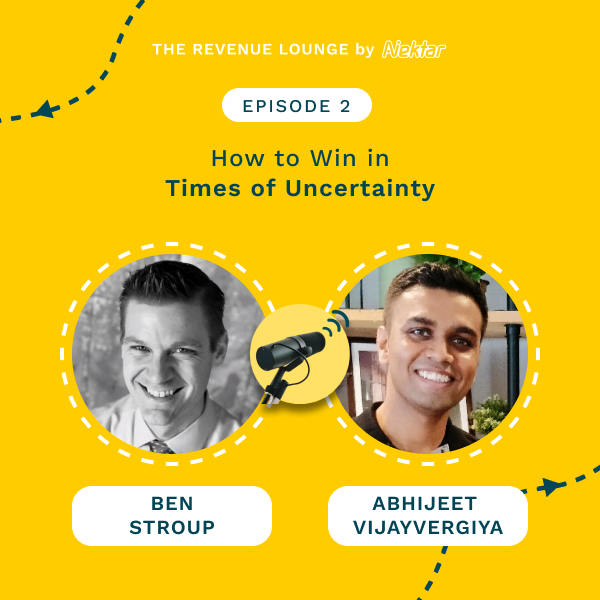
Ep #2: How to Win in Times of Uncertainty
Listen Now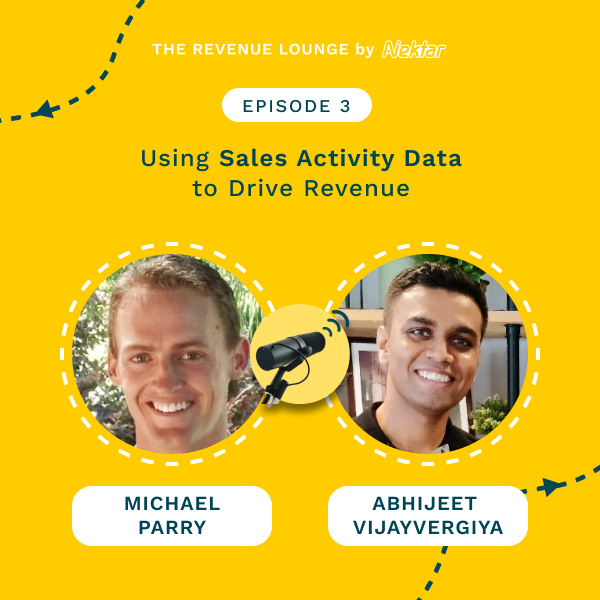
Ep #3: Using Activity Data to Drive Sales Productivity
Listen Now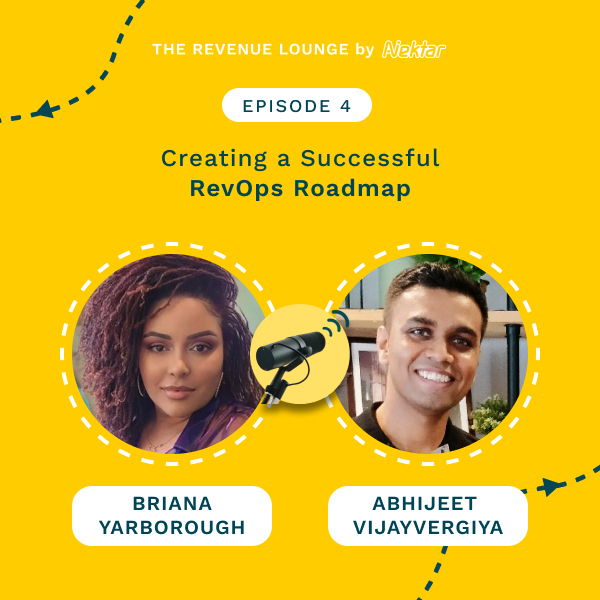
Ep #4: Creating a Successful RevOps Roadmap
Listen Now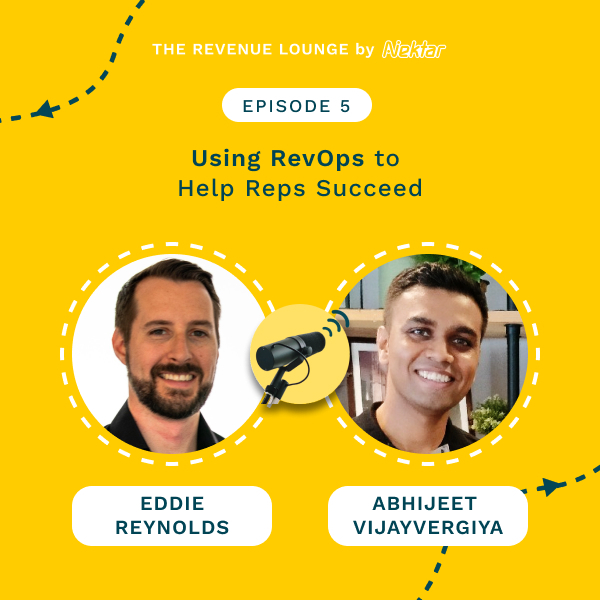
Ep #5: Using RevOps to Help Reps Succeed
Listen Now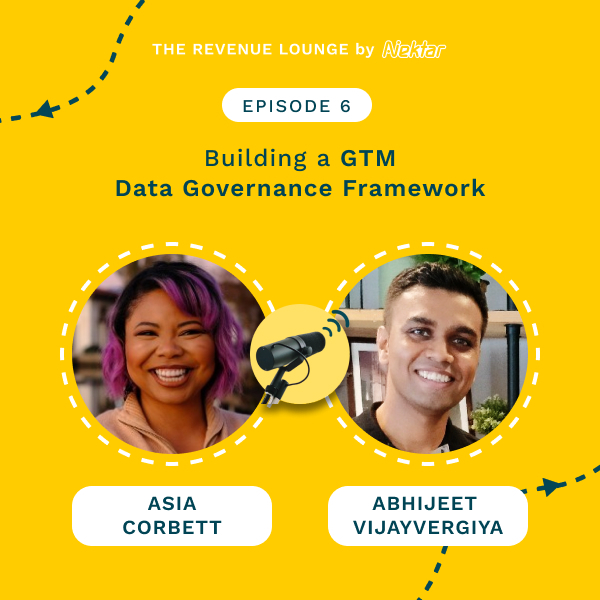
Ep #6: Building a GTM Data Governance Framework
Listen Now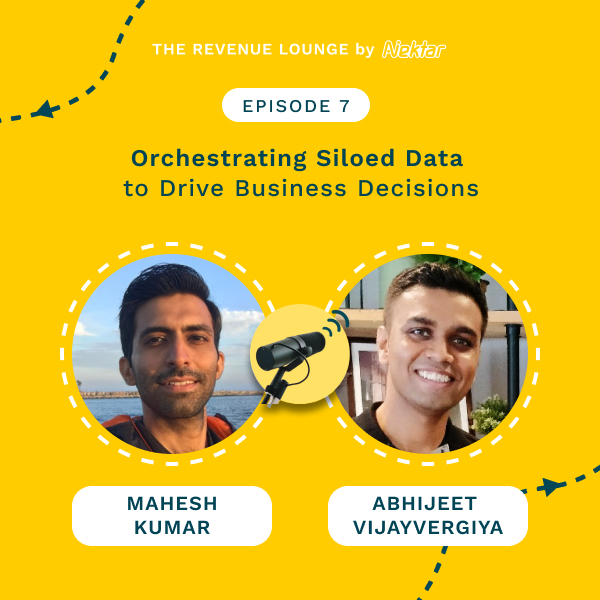
Ep #7: Orchestrating Siloed Data to Drive Business Decisions
Listen Now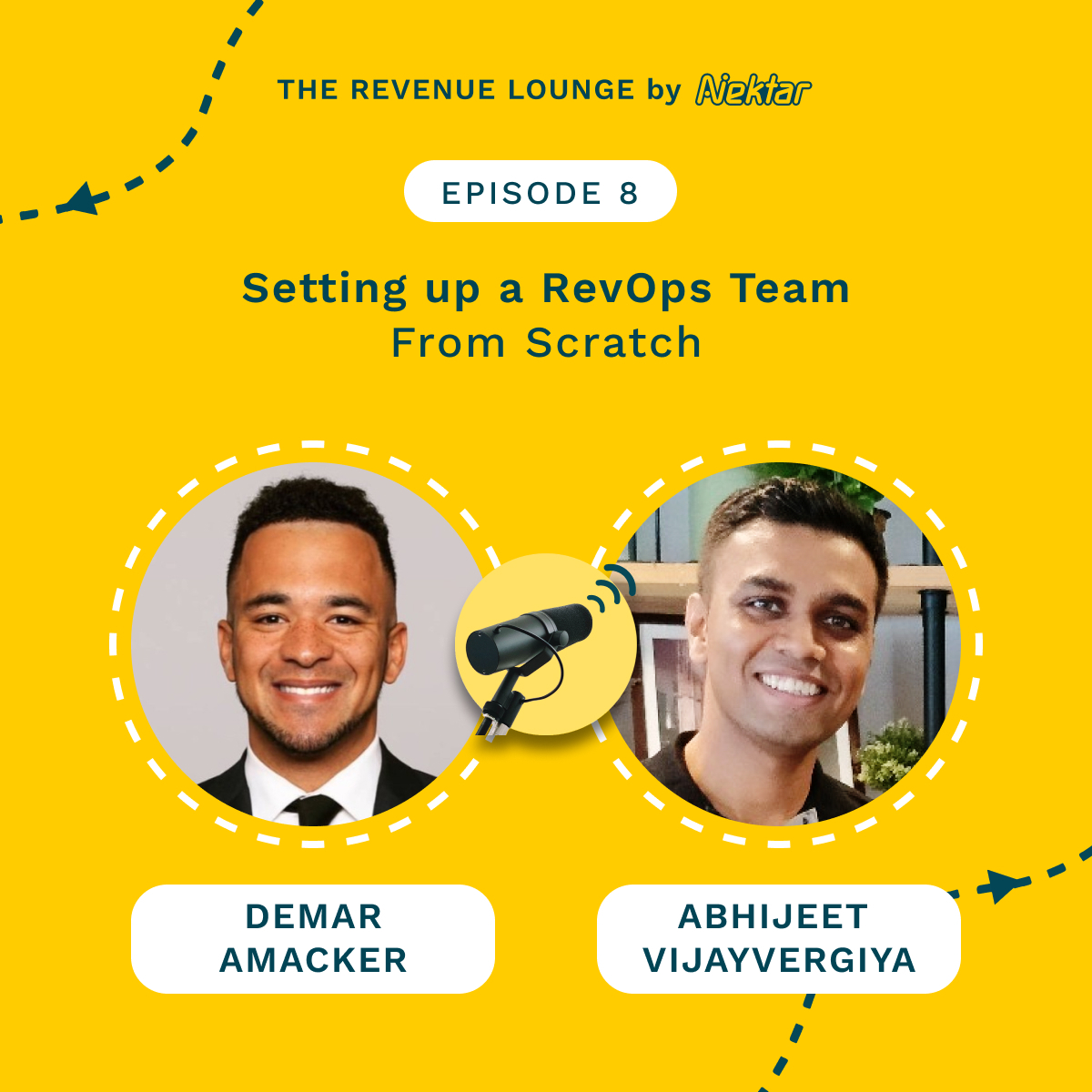
Ep #8: Setting Up a RevOps Team From Scratch
Listen Now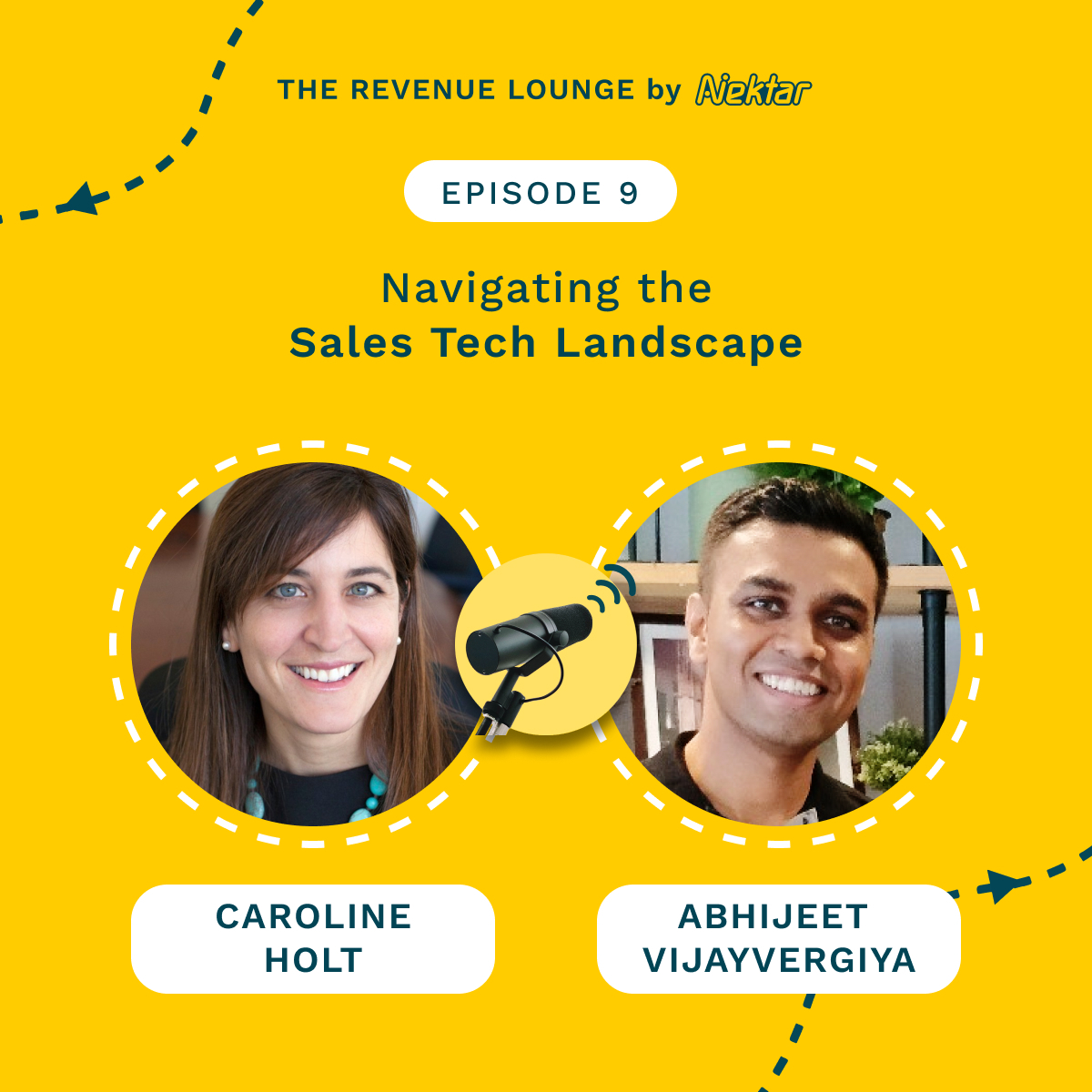
Ep #9: Navigating the Sales Tech Landscape
Listen Now